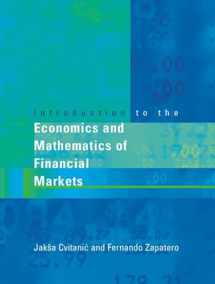
Introduction to the Economics and Mathematics of Financial Markets
Book details
Summary
Description
An innovative textbook for use in advanced undergraduate and graduate courses; accessible to students in financial mathematics, financial engineering and economics.
Introduction to the Economics and Mathematics of Financial Markets fills the longstanding need for an accessible yet serious textbook treatment of financial economics. The book provides a rigorous overview of the subject, while its flexible presentation makes it suitable for use with different levels of undergraduate and graduate students. Each chapter presents mathematical models of financial problems at three different degrees of sophistication: single-period, multi-period, and continuous-time. The single-period and multi-period models require only basic calculus and an introductory probability/statistics course, while an advanced undergraduate course in probability is helpful in understanding the continuous-time models. In this way, the material is given complete coverage at different levels; the less advanced student can stop before the more sophisticated mathematics and still be able to grasp the general principles of financial economics.
The book is divided into three parts. The first part provides an introduction to basic securities and financial market organization, the concept of interest rates, the main mathematical models, and quantitative ways to measure risks and rewards. The second part treats option pricing and hedging; here and throughout the book, the authors emphasize the Martingale or probabilistic approach. Finally, the third part examines equilibrium models―a subject often neglected by other texts in financial mathematics, but included here because of the qualitative insight it offers into the behavior of market participants and pricing.


We would LOVE it if you could help us and other readers by reviewing the book
Book review




